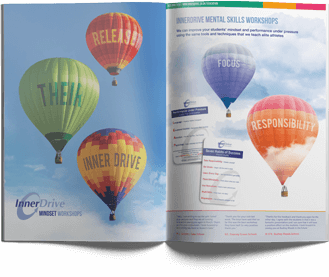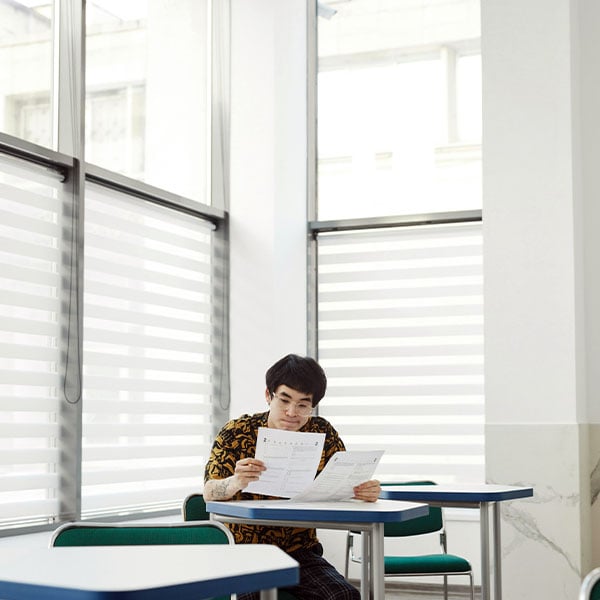Schools in the UK have returned, and many people across the country are contemplating how best to support students after months of lockdown. The government has put millions of pounds worth of funding into education to help students ‘catch up’, and schools are considering how best to spend this money.
At such an important time, it’s crucial that we get it right. How do we help students to settle back into face-to-face learning, minimise learning losses and boost academic performance, while supporting students and keeping their well-being at the heart of everything? At InnerDrive, we think there are 3 key things to remember during this time…
1. Slow and steady wins the race
Ofsted reports and research from the Education Endowment Foundation have shown us the extent of the impact of months of remote learning on students, including on reading and maths ability. However, teachers have reported concerns that in an attempt to make up for such learning losses, the government is taking a ‘cram it all back in’ approach. This isn’t the most effective way of doing things.
It’s not a good idea to attempt to ‘catch up’ on months of missed learning in the short space of time left before the summer holidays. Here’s why:
- Expecting students to pick up where they left off and quickly ‘catch up’ on their ‘learning loss’ places a huge amount of pressure on them (and on you, educators), piling on even more stress after the stresses of the previous months.
- Trying to ‘catch up’ on missed information on top of learning new information is likely to lead to cognitive overload. This means students will struggle to transfer both missed and new information into their long-term memory and won’t ‘properly’ learn either. A rushed approach is therefore counterproductive.
This means slow and steady may win the race. This should include allowing time for students to consolidate their learning with strategies such as retrieval practice, before moving on to new topics. This also provides a way for you to monitor progress. The key message? Don’t rush, avoid cognitive overload, and keep student well-being strong.
2. It’s all about balance
As we’ve advocated in many of our blogs, high expectations are a powerful tool to help your students achieve. However, when returning to school after lockdown, it’s going to be all about balance.
All the current talk about the need for students to ‘catch up’ and make up for lost progress takes a rather negative approach, and can put excessive pressure on students. Many students might be feeling overwhelmed about being back at school and having ‘loads to catch up on’.
This means that as teachers, you have an important role to:
- Maintain high expectations of your students and believe in them. This should help motivate them, and help them to also believe in their ability to overcome the challenges they’ve faced over the past year.
- At the same time, try to avoid excessive pressure. This means adjusting expectations to accommodate for the difficulties students have faced, being flexible, and giving students the strategies they need to cope with stress.
In other words, a pinch of high expectations is great, but let’s balance this with being supportive and accommodating of students, including praising them for how they have adapted and worked hard so far through the global pandemic.
3. Support, support, support
The final thing we think is crucial to consider is the need for student support, as well as putting their well-being first. We cannot emphasise this enough. As students return to school, the matter of catching up on learning and nourishing students’ mental health is not an either/or. Well-being support, after the stresses of the pandemic, is vital in order to promote academic improvement.
As Maslow’s Hierarchy of Needs teaches us, in order to meet higher order needs such as learning and thriving, people need to have lower order basic needs and psychological needs met first. This means that to be in the best state to learn, students need to feel healthy, safe and happy. Schools can ensure they meet these needs and support their students through:
- Giving them lots of outdoor time and exercise;
- Giving them plenty of time to socialise and play with friends;
- And most importantly, allowing them to have fun!
FINAL THOUGHTS
As a final thought, these same ideas can be applied to proposed summer school programmes. These can provide a a great opportunity to help students who struggled in lockdown, particularly those from disadvantaged backgrounds. However, to be effective, they need to be done right.
So, if your school is planning a summer school programme, make sure it takes learning slow and steady, keeps expectations and support in balance, and includes well-being support, social interactions, and play time.
For more on helping students as they return to school, do take a look at our blog on growing back student resilience after months of lockdown.







